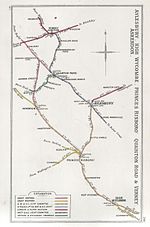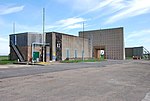Wotton Underwood

Wotton Underwood is a village and civil parish in Buckinghamshire, England, 7 miles (11 km) north of Thame, Oxfordshire. The toponym is derived from the Old English for "farm near a wood". It is recorded in the Anglo-Saxon Chronicle of AD 848 as Wudotun and in the Domesday Book of 1086 as Oltone. The affix "Underwood" was added later to distinguish the village from other places also called Wotton. The affix means "near the wood" and refers to the village's nearness to the ancient Bernwood Forest.The present manor house in the village, Wotton House, dates from the early eighteenth century, but has been much altered since, notably by John Soane in the 1820s. The former stables, now called South Pavilion, was the home of actor Sir John Gielgud; it was bought by Tony and Cherie Blair for £4m, in 2008.
Excerpt from the Wikipedia article Wotton Underwood (License: CC BY-SA 3.0, Authors, Images).Wotton Underwood
Dorton Road,
Geographical coordinates (GPS) Address Nearby Places Show on map
Geographical coordinates (GPS)
| Latitude | Longitude |
|---|---|
| N 51.8378 ° | E -1.0024 ° |
Address
Dorton Road
HP18 0NY , Dorton
England, United Kingdom
Open on Google Maps







